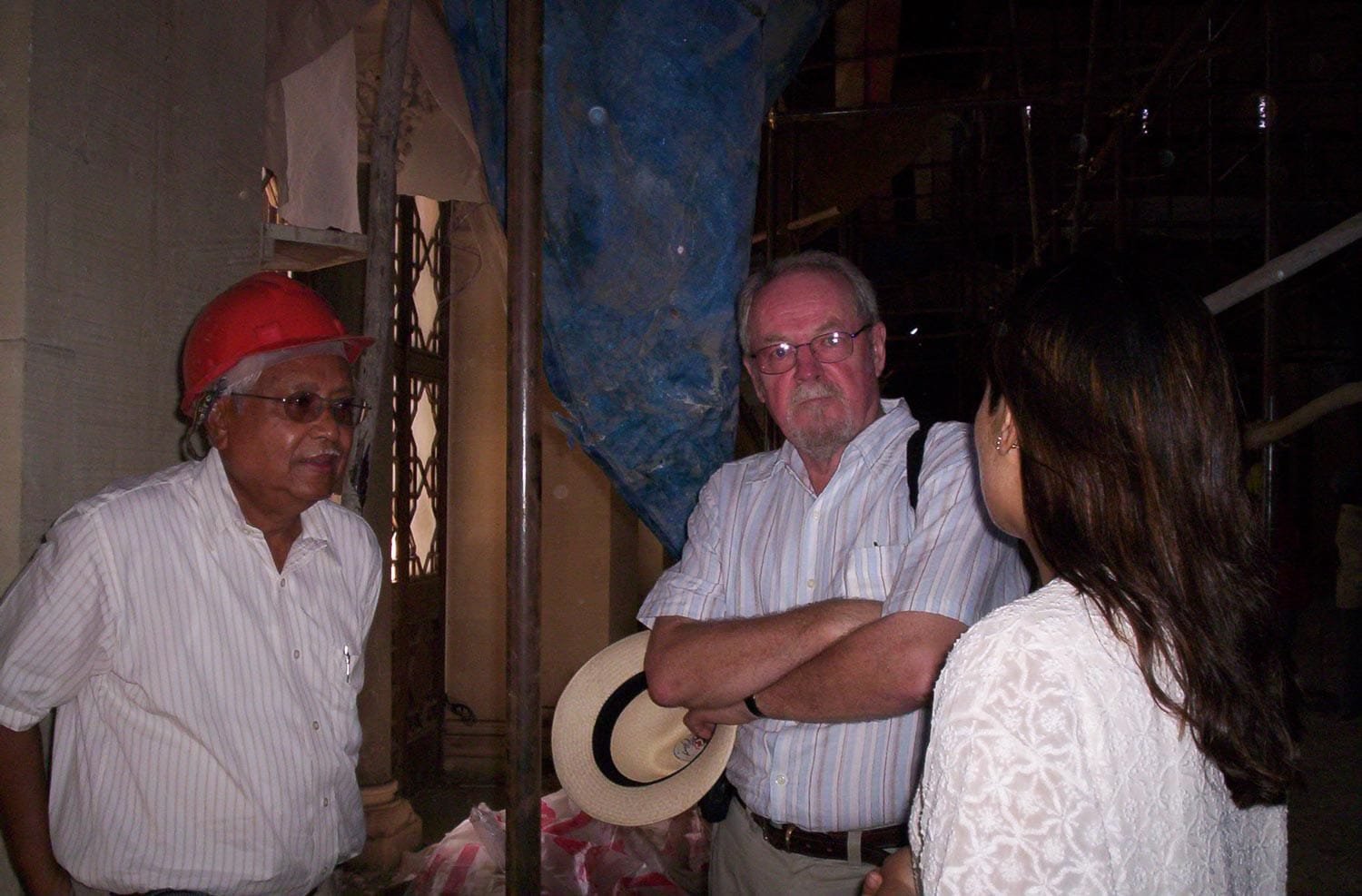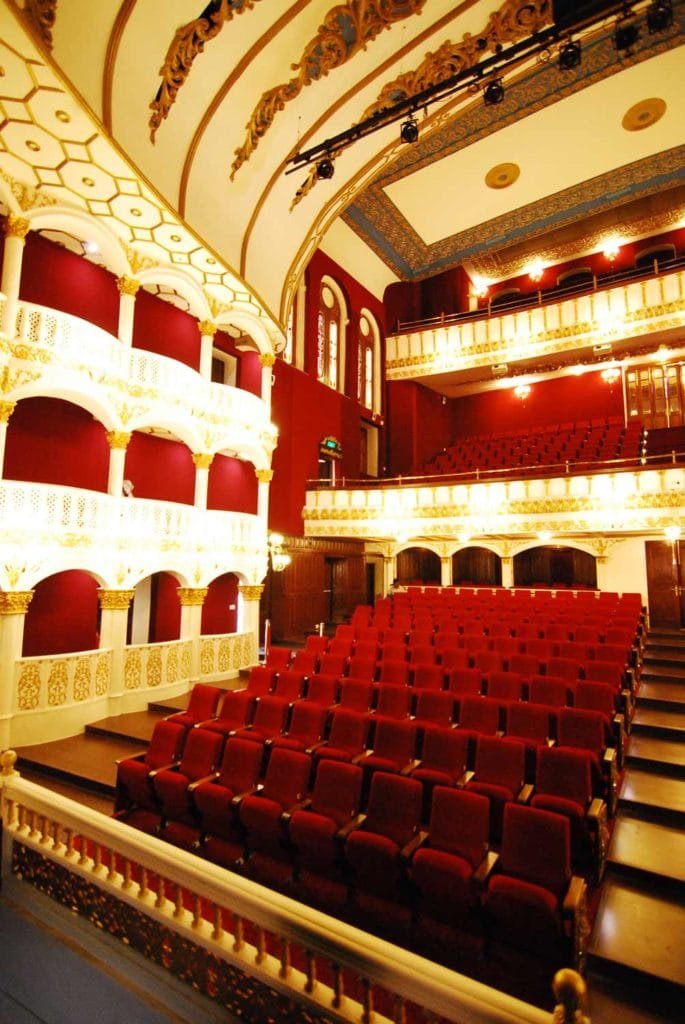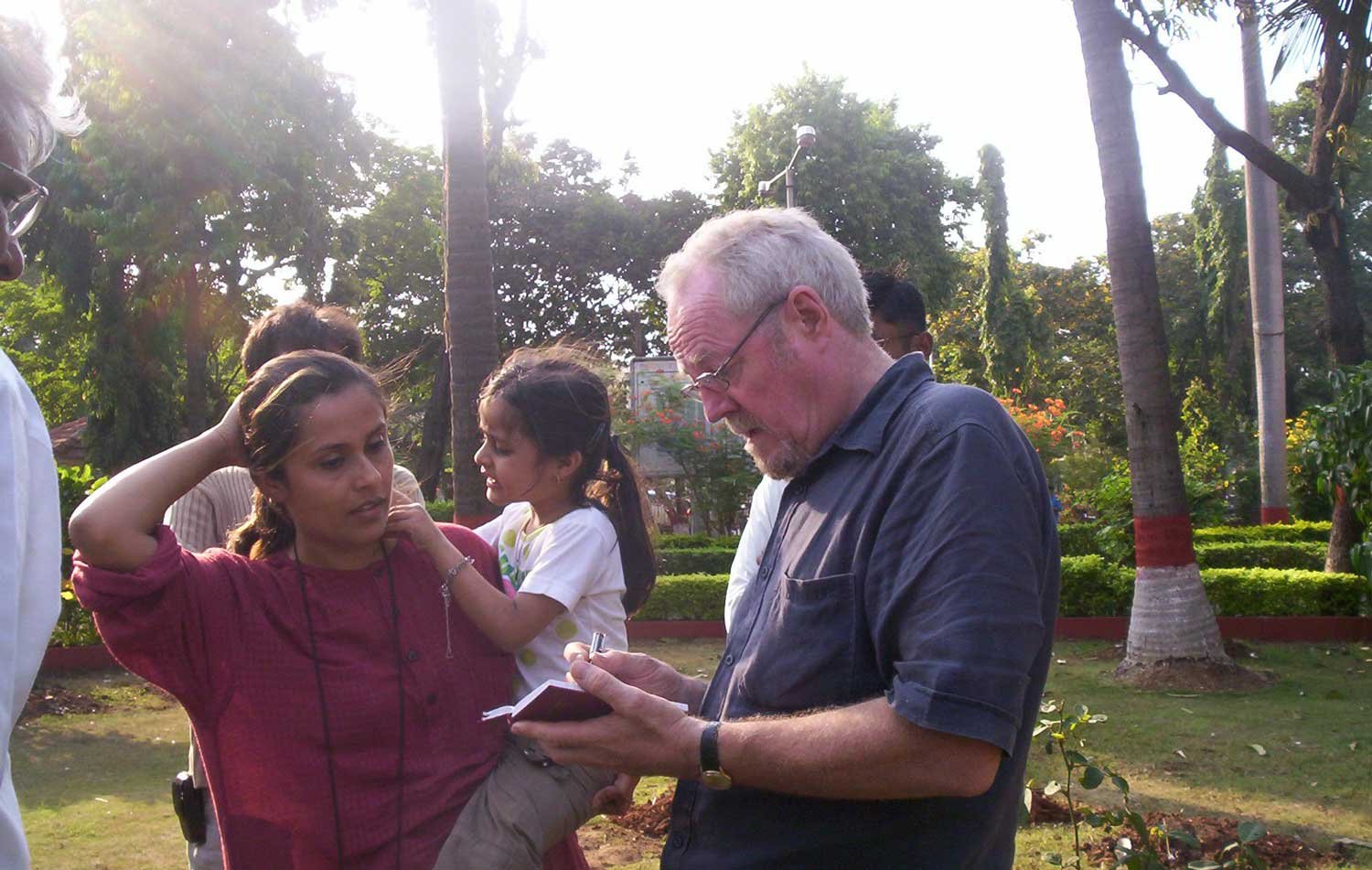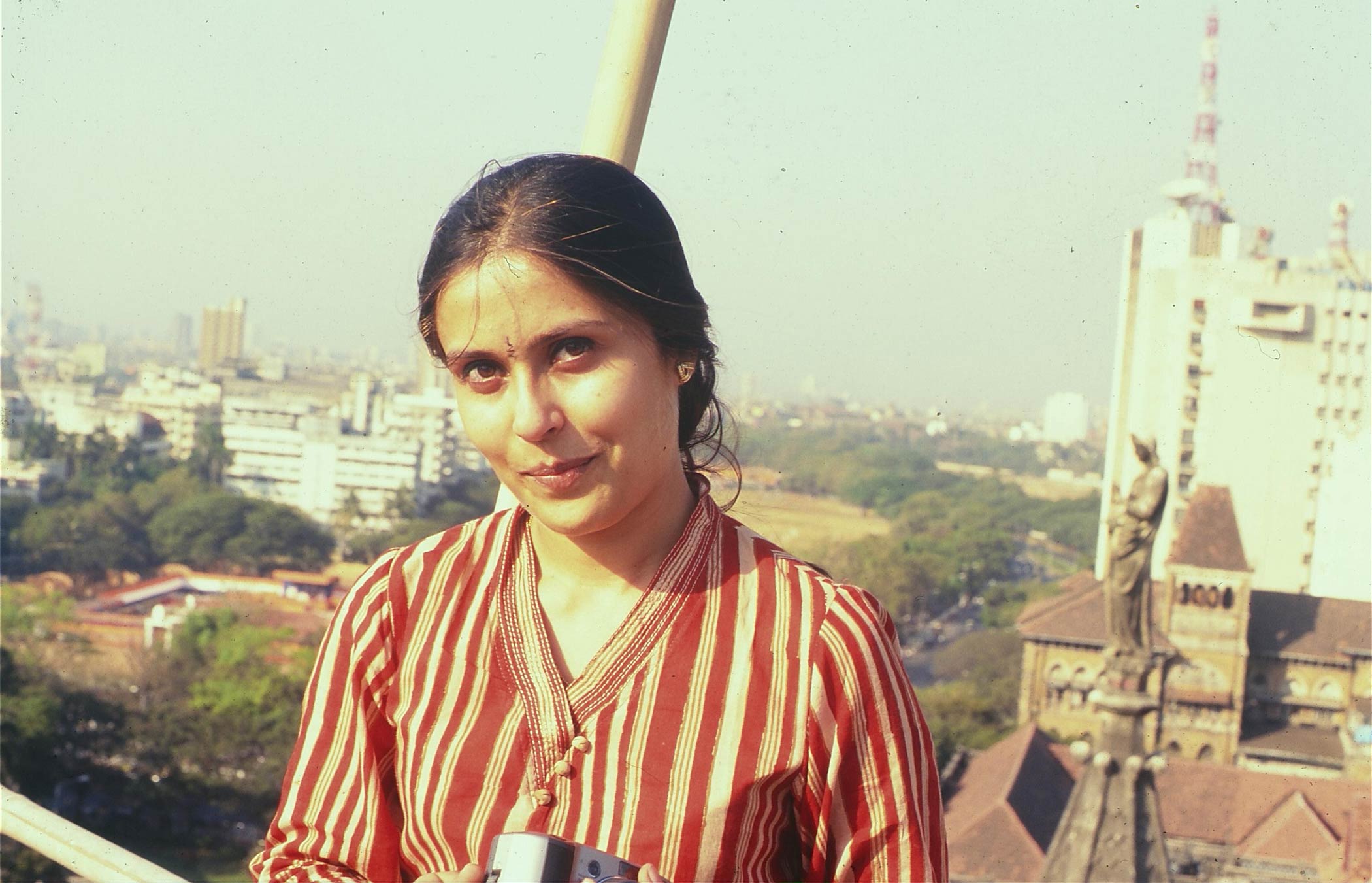In the concluding part of the interview, Abha Narain Lambah talks about her rich experience with conservation projects in India. She shares her views on pertinent issues like ‘Adopt A Monument,’ adaptive re-use, and the state of architecture colleges in India.
(Read about Abha’s journey to Mumbai and her role in latest UNESCO inscription, in Part 1)
The UNESCO inscription is also a call to action. The inscription does not automatically erase environmental and urban pressures on Bombay’s Victorian Gothic and Art Deco buildings. Can you tell us about your rich and varied experience in the field of conservation? What are some of the largest projects you have worked on?
Abha: I think normally most people start with doing one interior or a house, and then graduate to doing public buildings. With me, it was just the opposite. My first project was a streetscape at Dadabhai Naoroji Road, Mumbai. I worked on design guidelines for signage and street furniture. That was the first project I got from MMRDA in 1998. I then went on to work on the conservation of Elphinstone College, and one pilot project for Horniman Circle on Botawala Building. We just had six lakh rupees, and we wanted to show to the association that something is possible even in six lakh rupees. Interestingly, I started in reverse, first, with streetscape projects and then on individual buildings. In terms of the UNESCO dossier, I have worked on the High Court, Bombay University, Elphinstone College, and Prince of Wales Museum. In essence, I have worked on the Victorian buildings.
Right now I am working on the Keneseth Eliyahoo Synagogue in Kala Ghoda, the Commissioner of Police Headquarters, and Crawford Market. We are still working on different phases of the Bombay High Court project. Outside Bombay, we are working on quite a few projects like the Teen Murti Memorial, Bikaner House, and Gole Market in Delhi. We are also working on La Corbusier’s Capitol Complex in Chandigarh which is now a World Heritage Site. It’s interesting that we are getting to work on both ‘modern’ World Heritage Sites in India. In a way, Bombay’s 1930s Art Deco made it possible for 1950s and 1960s Chandigarh to happen because Bombay became the learning ground for Indian engineers and contractors to deal with reinforced concrete and modernism. Eventually, this was what made Chandigarh possible.
“In a way, Bombay’s 1930s Art Deco made it possible for 1950s and 1960s Chandigarh to happen because Bombay became the learning ground for Indian engineers and contractors to deal with reinforced concrete and modernism.”

Is there anything India specific that you find uniquely challenging when you are doing conservation? Given the limited archival resources we have in India, how do you work with the system to generate the kind of information that is required to maintain the integrity of the project?
Abha: If you are working on a conservation project abroad, they are so professional as conservation has been around for such a long time. You don’t have to explain a thing to the contractor, and they come with their set practices. In India, you are basically dealing with a bunch of civil contractors, so you have to teach them from scratch how to slake lime and how to deal with heritage buildings. We have an amazing amount of master craftsmen but they are not in the system. To improve the quality of workmanship, your regular contractor has to be sensitive enough to get the best craftsmen. Half the time, the contractor will like to cut corners, and get cheaper, unskilled labour to do the same job. It’s far more difficult to achieve that standard of workmanship. Secondly, research is equally important. If you don’t intimately understand construction period, materials, and techniques and if you don’t have a full grip on the condition of the building and what it requires, you will definitely go wrong. You have to be intimately associated with the building. You have to know it inside out to be able to suggest any interventions.
For example, it’s rare but you sometimes do get lucky. I was working on Opera House. Initially when we started, we had just a few photographs about the exterior façade, and that’s about it. Then, while we were working on this project, we came across an old pamphlet published just a year later which had everything explaining how they used fans and slabs of ice to throw cold air into the auditorium. It described the colour palette, with photographs of the foyer and chandeliers that had gone missing. In some cases, you get spectacular written or photographic information. But then again, there is a certain challenge to it. All the photographs were black and white. To establish certain colour palettes, we had to either rely on written texts or scrapes to check old layers. In some cases, you get this kind of an approach. Sometimes, you come across old films to establish things. Through these, we found out that side balconies were there until the 1970s. They were then knocked down and the interior was changed to fake Art Deco. It was different from the Art Deco interiors of the 1930s and the 1940s, and you can imagine the intervention taking place. We saw films from the 1960s where it still showed the rococo interior. In Mani Bhavan, a lot of oral history was involved in figuring out what the original colour schemes or materials were. So, there are a lot of times when you also need to look at oral histories, written research, photographs, and texts. There have sometimes been letters written by Lady Curzon or Lady Dufferin which spoke about the colour schemes of the Vice Regal Lodge interiors. This was so different from all that was there at the sites. Sometimes you get information from some of the most bizarre sources.

Today, you are widely renowned for your work, commitment, and passion, for restoration and conservation. What do you think is the crowning hallmark of the work done by ANL and Associates? According to you, what is your greatest contribution to the field of conservation?
Abha: One of the things that I tried in my own little way was to make architectural conservation not become dead reports that sat in government offices and libraries. When I began working, there was just a lot of great research and reports. There was a lot of academic understanding. It was more theoretical. Through my 22 or 23 years career, I have tried really hard to actually create implementable projects and models. Some were successful, and some weren’t. But the idea of looking at a commercial streetscape and signage guidelines in 1998 was not tried by any other city.
“Through my 23 year career, I have tried really hard to actually create implementable projects and models.”
Or, getting shopkeepers to fund cast iron street furniture in front of their buildings, and get them to pay for it without government support which happened in 1998 at D. N. Road, Mumbai. I think it was a very path breaking model. Whether other people followed it or not, I at least tried to make it happen and I made one model happen. Then, for example, getting an NGO like Kala Ghoda to start using their leverage and start using their festival funds to restore the government-run Elphinstone College’s façade. An NGO funding a government building was again a similar model. Whether I look at that or even look at later projects like the Royal Opera House where a derelict building without government funding was restored and is now self-sustainable.
So, the sustainable model evolved, that conservation can be done with privately owned buildings and remain successful. I think throughout my career I have tried to prove through actual live working projects that conservation is not about government funded projects. It’s also not about monuments, but it is about people. It is about doing these things at the local grass-root level. Again, I don’t know if I will be remembered positively or negatively for that, but I have always tried to come up with a new solution to that rather than say that I need to be appointed as an official architect.
“I think throughout my career I have tried to prove through actual live working projects that conservation is not about government funded projects. It’s also not about monuments, but it is about people. It is about doing these things at the local grass roots level.”
Mumbai’s successful bid for its third UNESCO World Heritage Site suggests that conservation is increasingly gaining traction in India. In both the public and the private sphere, new initiatives like ‘Adopt a Monument’ and ‘Adaptive re-use’ have come about. What are your thoughts or reservations about these initiatives?
Abha: As long as we can keep very strict checks and balances, the corporate citizenry can help improve the condition of our monuments which in many cases is really pathetic. I think this is something that could be worked on. As a policy, it is only as good as its management and whether it is able to keep a tight check on visual aesthetics and how far they allow a corporation to go. They have to be able to really deliver and improve the site. A majority of times, these remain on paper. Ten years ago, ONGC had committed funds to sites like Qutub Minar and Kanheri, and we are still waiting for any improvement. That’s why one wonders if there is going to be any improvement. Quality of implementation is also important. If they are giving it out to corporations, they should make sure that quality is of prime importance.
Yes, there is a dire need for [adaptive reuse]. We have single screen theatres like Edward, Capitol, Eros, Liberty, Metro, and Regal. The city has the finest theatres, and the city also has some of the most cultured populations, the kind of people who are willing to pay for this kind of experience. We can use that to create amazing models for cinema halls. You can turn one into a live performance theatre. Whatever we turn them into, let’s give them a use. Let’s give them back their dignity. I am so sure that Bombay is such a city that all these will be sustainable models because in Bombay people are dying to try out a new experience. Unlike a city like Delhi where you have government-funded organisations and kala academies and Triveni Kala Sanghams and Sri Ram Centres and Kamani Auditoriums, we can barely count NCPA and Opera House as two. If we are able to develop these, they will definitely be successful.

Conservation is often portrayed as a trade-off, with one side emphasising development and the other talking about heritage. The two sides seem to be in a never-ending deadlock. Do you think there will ever be a middle ground and is Mumbai’s Art Deco Ensemble a success story?
Abha: Absolutely, it is. Every part of the city cannot have the same real estate value. As a basic thumb rule of demand and supply, where there is less supply there will be greater demand. So a builder can claim more value per square foot in a heritage area because he is giving it out to a bunch of very exclusive people. So, it is really not a bad thing to regulate heritage areas. Even as a child when you play monopoly, you realise that your property at Mayfair is going to be far more expensive than at Paddington Station. Keeping the same child’s play thumb rule in mind, if in Marine Drive you are not allowed to go higher than six floors, only people who can afford that kind of real estate will invest in it because it is obviously at a premium. So you cannot allow 20 floor buildings in Marine drive now because it ruins the quality of Marine Drive. Then, why would you want to be in Marine Drive if it no longer looks like it?
There is definitely a middle path. And if the government looks at it this way and the builders look at it this way, it is actually in their own interest to save Marine Drive because it is a visually iconic piece of this city. The minute you destroy it, what’s so great about it for you to live there? So, that is what makes it fabulous and people should be willing to pay top dollar to be able to live there. Across the world, heritage areas are more sought after because they afford a great quality of life. Because of that, you are able to make real estate values compatible with the quality of that area.
“So, it is really not a bad thing to regulate heritage areas. Even as a child when you play monopoly, you realise that your property at Mayfair is going to be far more expensive than at Paddington Station. Keeping the same child’s play thumb rule in mind, if in Marine Drive you are not allowed to go higher than six floors, only people who can afford that kind of real estate will invest in it because it is obviously at a premium.”
Let’s shift gears a little. There are these architecture schools across the country, and they are churning out students by the thousands. All these youngsters, many of them are talented and qualified, are coming into the mainstream. But they are all struggling. There aren’t enough opportunities. There aren’t enough jobs. What would you say to them?
Abha: I think Mumbai has 29 architecture colleges. I would first say that you cannot mass produce architecture and architects. The quality of faculty is very important. When I was studying at the School of Planning and Architecture, it was the only college in the entire National Capital Region. If you took all of North India, there was Chandigarh College of Architecture, SPA, Roorkee, and Lucknow. Four colleges for all of North India. That’s why we got the finest faculty. We had the likes of Mr. [Balkrishna] Doshi teaching us professional practice. We had history taught by Satish Grover who had written seminal books on architectural history. At our juries, we had people like Kanvinde and Raj Rewal coming. So, the quality of faculty was so amazingly rich that it finally reflected on the quality of the product. Having said that, if you have 29 architecture schools in one city, they are finally hiring (as faculty) whoever graduates because there is a paucity of good teachers.
“… you cannot mass produce architecture and architects.”
Your output is definitely dependent on the quality of input that you give. Why do we need to have so many architecture colleges? Secondly, architecture as a profession is for the long haul. It’s not like an MBA who will suddenly get a placement and earn a 100,000 salary. For architects across the world, it is a longer struggle. People who get into architecture are normally the ones who at least have some idealistic beginnings and in the middle of the way develop cynical attitudes or give up. A lot of people join architecture for certain beliefs in good design or idealism. They need to know that it is a long journey and a hard journey. As Zaha Hadid said, “If you want an easy life, don’t become an architect.” I completely subscribe to that idea.
“As Zaha Hadid said, “If you want an easy life, don’t become an architect.” I completely subscribe to that idea.”
As once a student yourself, are there any particular people or famous architects who have inspired you in the world? Or, any books that have emerged as seminal pieces for you? Books that you keep on re-visiting. You pick it up and you say, “I need to go back to my bible and just look at the kind of work this person did.”
Abha: As an architect, you have always read the Fountainhead, and I have always said, why should Howard Roark be a male figure? It could have been a woman. Among architects, I have been inspired by the work of Gae Aulenti who is a woman, and who worked on rethinking and reconfiguring the Musée d’Orsay that converted a railway station to a museum. That too way back, decades ago. She was like the ultimate architect who could rethink historic spaces and do them so beautifully. So yes, to that extent, Gae Aulenti. Especially since I have worked with historic buildings and at each point when I am working on a project, I sort of tend to breathe and live either the person behind the building or the architects. I mean, I spent so much time researching Gilbert Scott when I was working on the Convocation Hall.
The last three years, I have worked on both Anand Bhavan, Swaraj Bhavan in Allahabad, and Teen Murti. So I think I have really been reading up so much on Nehru. That also came in handy when I was working now on the Capitol Complex. It’s politically the wrong time to say it. But when you start reading him and read Nehru, you are just amazed that in the 1930s, when this man was writing out of prison, he had such a clear sense of what liberalism is and he is more emancipated than any other modern man that I know of today. If that was the kind of a person who was our first Prime Minister, all we need to do is read his books again to understand. If you read Discovery of India, you understand so much about how he sees this country as a beautiful mix of so many civilisations and not just one civilisation. When you read his autobiography, he is so candid about his relationship with his wife. He is writing in the 1930s which is so rare. I wouldn’t see a politician writing like that even 80 years from that date. So, that to me is quite amazing.
“…I have worked with historic buildings and at each point when I am working on a project, I sort of tend to breathe and live either the person behind the building or the architects.”
Finally, we all know that you are a workaholic. But, what do you do when you are not working?
Abha: I also work on weekends because I love what I do. I would pay to go to the sites that I am paid to go to. So, I am not complaining. But, I do tend to travel quite a bit. This is the first weekend after four weekends that I am actually at home. So, one of my passions is travelling. I love listening to old Hindustani music, and listen to music quite a bit. I love reading, and I have always been a history buff. It’s just interesting that, as an architect, I can put my love for history into perspective.
“I also work on weekends because I love what I do. I would pay to go to the sites that I am paid to go to. So, I am not complaining.”
The UNESCO project is done now, and we all know that you are not going to stop. What’s on your horizon? What are you looking at as your next big dream project? Even though it may be a dream right now, is there something that you are really excited about?
Abha: We’ll get funds through the UNESCO inscription now from the Central Government, and we will be able to do an amazing night time illumination of all these buildings down Marine Drive and Oval Maidan and the Victorian Gothic buildings. We can then actually do night heritage tours. We can do the same, and extend it to areas like Ballard Estate. And, we can have al fresco cafes opening at night. Then, you could just walk around the Fort area, and have evening lighting and entertainment and jazz musicians performing on the road. I think that’s possible. We will be having a cup of tea in ten years and say that we did make it happen.

